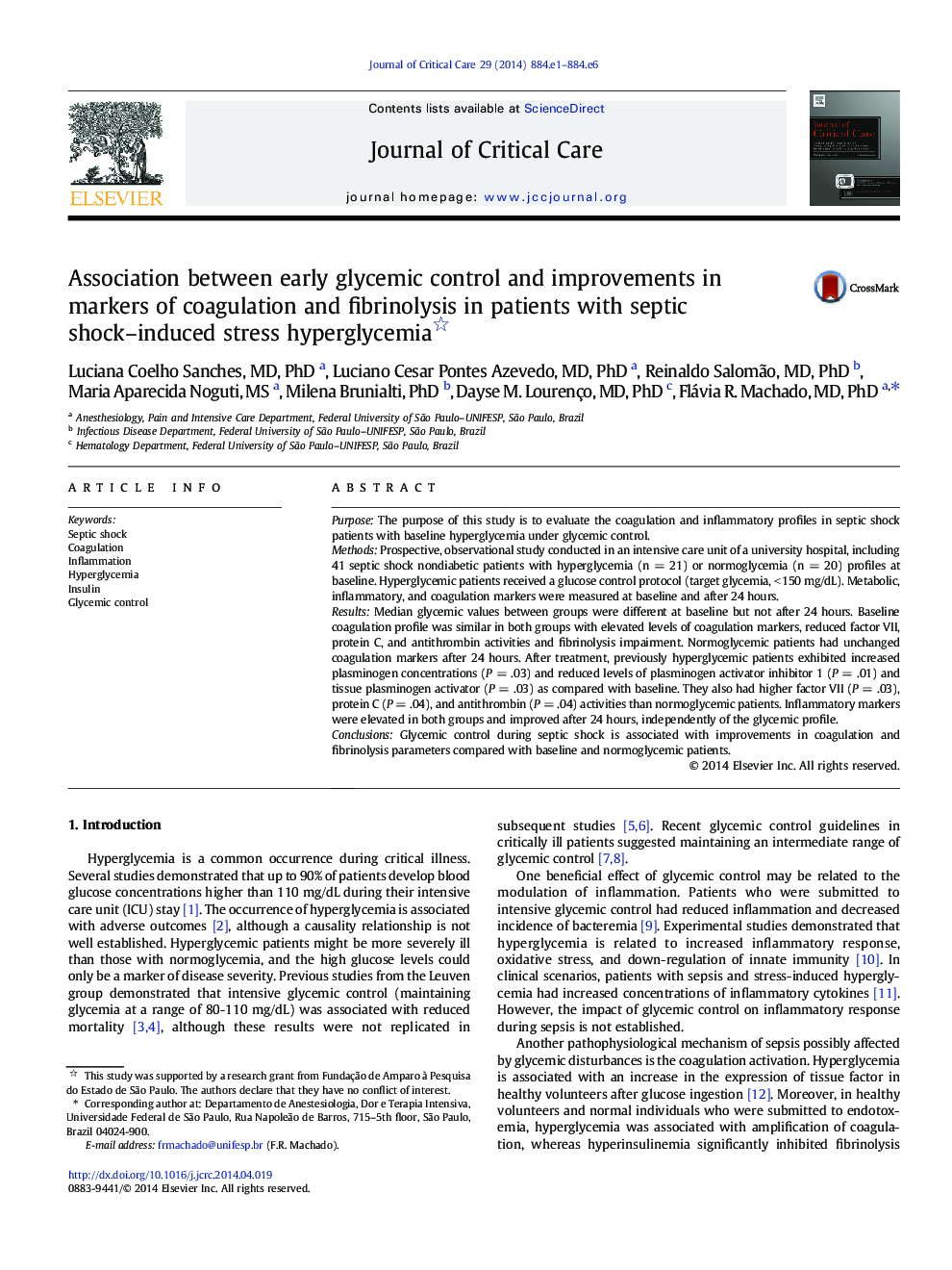| Article ID | Journal | Published Year | Pages | File Type |
|---|---|---|---|---|
| 5886048 | Journal of Critical Care | 2014 | 6 Pages |
PurposeThe purpose of this study is to evaluate the coagulation and inflammatory profiles in septic shock patients with baseline hyperglycemia under glycemic control.MethodsProspective, observational study conducted in an intensive care unit of a university hospital, including 41 septic shock nondiabetic patients with hyperglycemia (n = 21) or normoglycemia (n = 20) profiles at baseline. Hyperglycemic patients received a glucose control protocol (target glycemia, <Â 150 mg/dL). Metabolic, inflammatory, and coagulation markers were measured at baseline and after 24 hours.ResultsMedian glycemic values between groups were different at baseline but not after 24 hours. Baseline coagulation profile was similar in both groups with elevated levels of coagulation markers, reduced factor VII, protein C, and antithrombin activities and fibrinolysis impairment. Normoglycemic patients had unchanged coagulation markers after 24 hours. After treatment, previously hyperglycemic patients exhibited increased plasminogen concentrations (P = .03) and reduced levels of plasminogen activator inhibitor 1 (P = .01) and tissue plasminogen activator (P = .03) as compared with baseline. They also had higher factor VII (P = .03), protein C (P = .04), and antithrombin (P = .04) activities than normoglycemic patients. Inflammatory markers were elevated in both groups and improved after 24 hours, independently of the glycemic profile.ConclusionsGlycemic control during septic shock is associated with improvements in coagulation and fibrinolysis parameters compared with baseline and normoglycemic patients.
